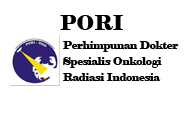The Applicability of Neutrophil-Lymphocyte Ratio in Predicting The Survival of Nasopharyngeal Cancer: An Evidence Based Case Report
Sari
Background: Having high prevalence and mortality with a distinctive geographical distribution, nasopharyngeal cancer (NPC) has caused a huge burden in the world. There are several prognostic factors in NPC, however additional marker is needed to give a better picture on disease outcome. Innate and adaptive immunity play a great role in disease progression, however, the role of neutrophil-lymphocyte ratio (NLR) is still controversial. This study aims to investigate the role of NLR status as a prognostic factor in NPC.
Methods: Literature searching was conducted through Pubmed, Cochrane, Proquest, EBSCO and Science Direct under specific keywords. Further filtering double and screening for eligibility criteria were performed before critical appraisal and measurement of level of evidence by The Centre for Evidence-Based Medicine (CEBM) University of Oxford. Review for the best available evidence was done by two-independent reviewer.
Results: 130 records were retrieved and 6 final articles were finally appraised. All studies were published after 2017 with sample sizes of 140-5973 subjects. NLR cut-off were varied across studies (2.21-3.6) and the overall survival (OS) ranging from 51-82.5%. Moreover, 5-year disease specific survival (DSS) and progression free survival (PFS) for low and high NLR were 76-90.5% vs 53-82.1% and 68-86.2% vs 52-76.5%, respectively.
Conclusion: NLR status can be used to predict OS in NPC patients. A careful approach should be taken in determining treatment options. Further research is needed to know the role of NLR in combination with other biomarker in predicting the survival of patients.
Teks Lengkap:
PDF (English)DOI: https://doi.org/10.32532/jori.v12i1.132 <
Article metrics
Refbacks
- Saat ini tidak ada refbacks.
This work is licensed under a Creative Commons Attribution-NonCommercial 4.0 International License.









